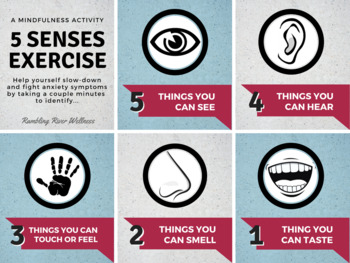

Rather, the point is to pay close attention to your physical sensations, thoughts and emotions in order to see them more clearly, without making so many assumptions, or making up stories. The goal isn’t to stop thinking, or to empty the mind. But in recent years, mindfulness meditation has become increasingly popular.īasic mindfulness meditation is the practice of paying attention to the present moment with an accepting, nonjudgmental disposition. Most religions have contemplative traditions, and there are plenty of secular ways to meditate, too. There are lots of different types of meditation.

And of course, if you realize your mind has wandered, simply note the thought, and return your attention to the body. Instead, just acknowledge what it is you’re feeling, and continue with the body scan. But try not to react - labeling the experience good or bad - even if it’s unpleasant. If you need to move to relieve real pain, do so. Some feelings might be neutral - tingling or itching. Some of the feelings might be pleasant, a gentle warmth, a comfortable weight. But as you progress, you might begin to notice a whole world of new sensations. Continue in this manner, moving across the face, over the ears, down the neck and shoulders and all the way down to your toes.Īt first, it might seem as if you don’t feel anything at all. See if you can feel your scalp, your ears, your eyelids and your nose. Slowly and deliberately, bring your attention to the surface of your skin, one inch at a time. Notice it - thinking - and then pause, and then come back to the present moment.” “Where we build our skill is in the practice of coming back,” said Ms. Simply acknowledge whatever it is you were thinking of - without ascribing too much judgment to it, without letting it carry you away - and take a moment to come back to the present, and resume your meditation. What’s important is how we respond when it happens. “Instead reopen the attention, then gently come and land again.”Īfter a few breaths, invariably, the mind will wander again. “Don’t just drag the mind back to the breath,” said Ms. Instead, let go of whatever it was you were thinking about, reopen your attention, then gently return your awareness to the breath, being present for each inhalation and exhalation. You don’t need to pull your attention right back to the breath. When this happens, simply notice what it is you were thinking about or what was distracting you, then take a moment and pause. “It’s the natural conditioning of the mind to wander,” said Ms.

There’s nothing wrong with this - thinking is just as natural as breathing. You may notice other sensations in the body, things happening around you, or just get lost in thought, daydreaming about the past or present, possibly judging yourself or others. It’s inevitable: During meditation, your mind will roam. Our minds wander so easily, and the clear instructions of a teacher can help bring us back to the present moment. Though meditating on your own is an essential part of a complete practice, the steady guidance of an experienced teacher can be invaluable, especially as you’re getting started. “Each of the applied mindfulness practices brings alive an experience that might otherwise be more automatic,” said Ms. In addition to basic meditation instructions, we’ve compiled guided meditations for a few popular exercises including the body scan, walking meditation and mindful eating. Instead, the practice involves paying close attention to the present moment - especially our own thoughts, emotions and sensations - whatever it is that’s happening. But it isn’t about trying to empty your mind, either. Mindfulness meditation isn’t about letting your thoughts wander. “Not just when we’re sitting on the cushion.” “The purpose of mindfulness meditation is to become mindful throughout all parts of our life, so that we’re awake, present and openhearted in everything we do,” said Tara Brach, a popular meditation teacher based near Washington, D.C. It’s a tool you can use to bring yourself back to the present in stressful situations.”īut we shouldn’t stop being mindful when we stop meditating. “Some people complain about taking time out of their day,” said Atman Smith, who teaches meditation to underserved communities in Baltimore. Even just a few minutes a day can make a big difference. Setting aside time for formal meditation is an important way to establish a routine and get comfortable with the practice.


 0 kommentar(er)
0 kommentar(er)
